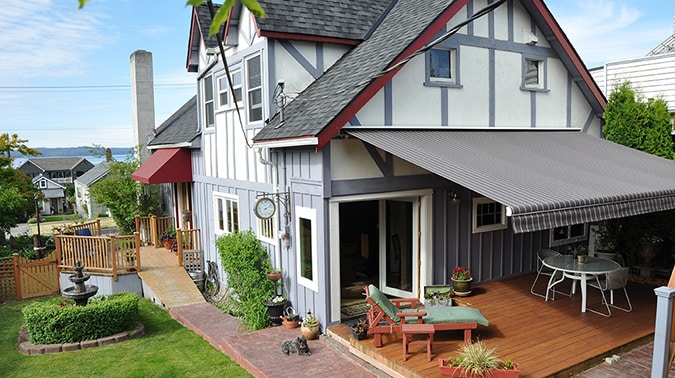The Pacific Northwest—renowned for its misty coastlines, towering evergreens, and mood-shifting skies—breeds an aesthetic as captivating and layered as its landscape. In 2025, that aesthetic continues to evolve, drawing from nature, sustainability, and a quiet sophistication that whispers rather than shouts. Here’s how to bring the spirit of the PNW into your home with intentionality, charm, and modern verve.
What is the PNW Aesthetic?
Rooted in the rhythm of the natural world, the Pacific Northwest aesthetic is a marriage of ruggedness and refinement. Think Douglas firs and hand-thrown ceramics, wool throws on concrete floors, and soft candlelight flickering against glass-and-steel lines. It doesn’t demand attention; it invites it gently.
Neutral palettes dominate—stone, moss, charcoal, and sand—interrupted by the occasional indigo or rust. Surfaces are tactile and honest. Wood is left unvarnished, stone unpolished. The look is not rustic, but restrained; not modern, but timeless. It’s a curated balance between organic imperfection and functional elegance.
Furniture
Form meets function in Pacific Northwest furniture design. In 2025, the focus leans heavily into clean silhouettes, heirloom craftsmanship, and sustainably sourced materials. Think Scandinavian minimalism with a soul—walnut credenzas, live-edge maple tables, and lounge chairs draped in merino wool.
Modularity is key. Urban dwellers in Seattle or Portland crave furniture that can adapt: nesting side tables, extendable dining surfaces, and storage-integrated seating. Upholstery leans natural—linen, leather, and organic cotton—while finishes remain matte and muted, with an aversion to high-gloss anything.
Statement pieces emerge not through flamboyance but through story: a vintage West Coast bench from the ’60s, or a handmade ceramic stool glazed in ash tones pulled from Mount Rainier’s slopes.
Windows
Windows are not merely panes of glass in the Pacific Northwest—they’re portals to mood. Natural light is precious here, and windows are treated as architectural elements in their own right.
In 2025, floor-to-ceiling installations continue to dominate new builds and renovations, framed in black steel or reclaimed fir. The goal: dissolve the barrier between indoors and out.
Window treatments lean sheer and intentional. Linen drapery in muted greys or warm creams allows ambient light to filter through without muting the outside world. Cellular shades and dual-layered roller blinds offer energy efficiency without aesthetic compromise—a must in a region where weather swings with poetic unpredictability.
Vibe
The prevailing vibe? Earthy modernism. A space should feel like a foggy Sunday morning—peaceful, grounded, and quietly elegant.
Every object earns its place. Clutter is nonexistent; instead, rooms breathe with curated intention. A sculptural light fixture overhead. A stack of coffee-table books about local flora and cabin design. A woven jute rug anchors the space, while a vintage record player spins Miles Davis on rainy afternoons.
The energy is calm, introspective. A home here isn’t designed for entertaining dozens—it’s designed for a fireside conversation, a good book, or a solo moment of reflection watching rain race down the glass.
Specific Needs of a PNW Home
The Pacific Northwest is as demanding as it is beautiful. Damp winters and sun-deprived seasons require materials and designs that do more than look good—they must endure.
Moisture resistance is critical. Engineered hardwood, porcelain tile, and sealed concrete are favored over carpet or soft pine. Entryways become transition zones, equipped with boot trays, textured mats, and closed storage to buffer the mess of muddy excursions.
Mold resistance and insulation matter. Homes benefit from breathable materials, improved airflow, and radiant heating systems. And lighting? A lifeline. Layered lighting design—pendants, sconces, and warm-tone LEDs—combats the region’s greyer days with ambiance and depth.
Seasonal Trends
Each PNW season evokes a different rhythm, and 2025’s trends follow suit with subtle flair.
Spring and summer lean into biophilic design—indoor trees, hanging plants, herb gardens built into kitchen islands. Florals take a wild turn: think meadow-inspired arrangements with branches and foliage over roses and lilies.
Autumn and winter call for textural depth. Chunky knits, velvet pillows, and sheepskin throws drape over dark-hued furniture. Wood-burning stoves and candle clusters create layered warmth. Accent walls in deep hunter green or oxblood replace stark whites, adding richness to dim-lit months.
Scent also plays a seasonal role—fir, cedar, bergamot in the colder months; lavender, basil, and eucalyptus in spring and summer.
Indoor vs. Outdoor
The boundaries between inside and out have never been thinner.
Outdoor living spaces are not an afterthought in the PNW—they are an extension of the interior. In 2025, covered patios, pergolas with retractable awnings, and heated decks allow for year-round use. Materials mirror the indoors: weatherproof woods, rust-hued metals, and natural stone.
Fire features remain a staple, but now with an eco-conscious twist—bioethanol fireplaces and smokeless fire pits. Furniture prioritizes comfort: cushioned lounges, outdoor sectionals, and layered textiles resistant to mildew.
Indoors, nature is invited in. Architectural plants like fiddle leaf figs or olive trees take root in stone or terracotta vessels. Large-format nature photography and handmade botanical prints echo the surroundings with elegance and restraint.
The Pacific Northwest home in 2025 doesn’t follow trends—it interprets them through the lens of place. Grounded in the environment, elevated in design, and honest in its materials, it creates a space not just to live in, but to feel in.



